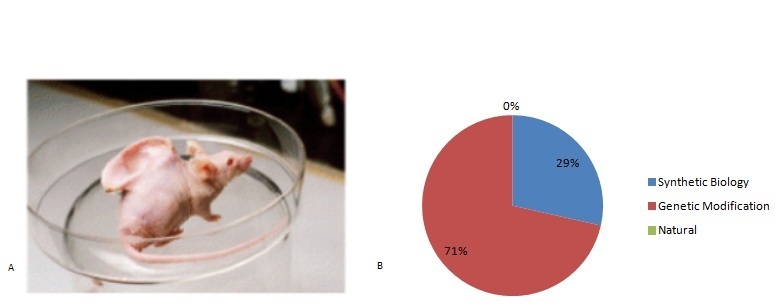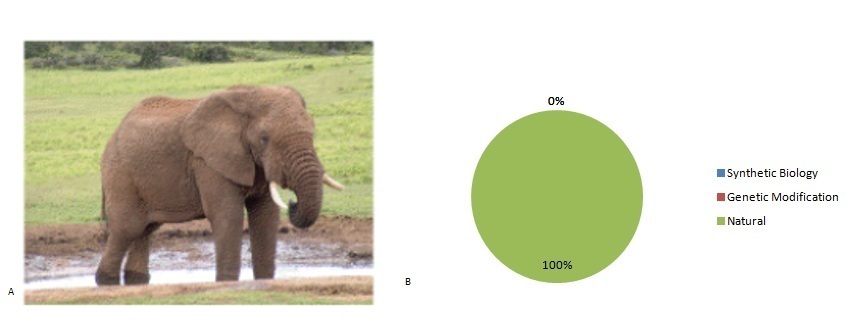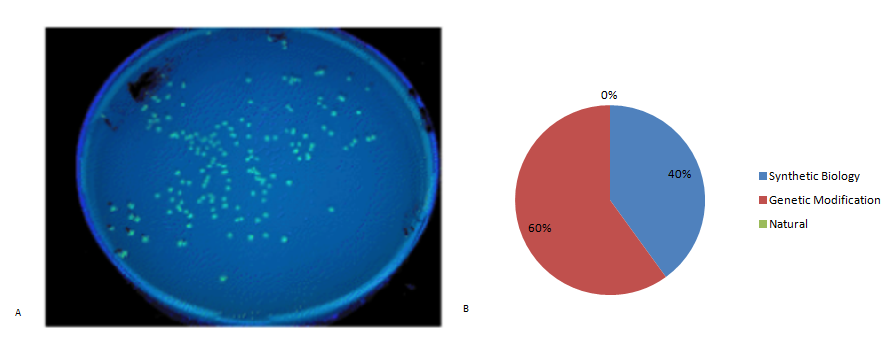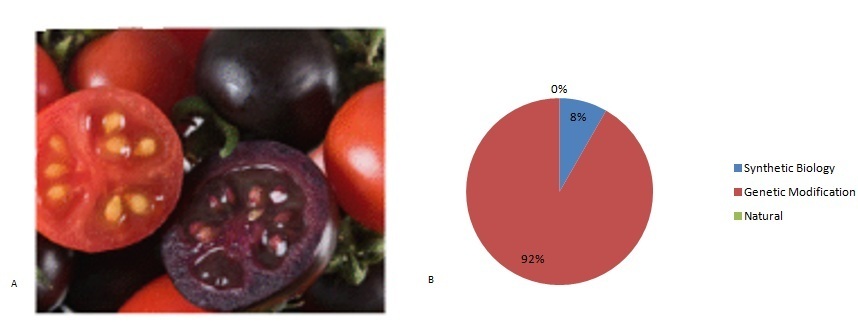Team:UEA-JIC Norwich/Human practices/Interviews
From 2011.igem.org
| Line 29: | Line 29: | ||
<br> | <br> | ||
<br> | <br> | ||
| - | + | Image 1.A shows a Tricolour Beagle dog, which was selectively bred to give the modern breed. Figure 2.B shows that 86% of the people we interviewed perceived the Beagle to be natural. However, 14% concluded it may also be genetically modified in terms of selective breeding, although does not involve the introduction of genes from a different species. | |
<br> | <br> | ||
[[File:Wiki beagle.jpg]] | [[File:Wiki beagle.jpg]] | ||
<br> | <br> | ||
<br> | <br> | ||
| - | + | Image 2.A. shows an image of Dr Jay Vacanti work of successful growth of a human ear from cartilage cells on the back of a mouse. Figure 2.B shows that 29% of people associated the image with synthetic biology, and 71% associated it with Genetic Modification. | |
|- | |- | ||
| | | | ||
| Line 40: | Line 40: | ||
<br> | <br> | ||
<br> | <br> | ||
| - | + | Image 3.A. shows an image of a wild African bush elephant. Figure 3.B shows that 100% of people recognised it was natural. | |
|- | |- | ||
| | | | ||
| Line 46: | Line 46: | ||
<br> | <br> | ||
<br> | <br> | ||
| - | + | Image 4.A. shows an image of an agar plate containing e.coli that has been transformed to express green fluorescence protein (GFP). Figure 4.B shows that 60% of people considered this to be Genetic Modification, and 40% considered this to be Synthetic Biology | |
|- | |- | ||
| | | | ||
| Line 52: | Line 52: | ||
<br> | <br> | ||
<br> | <br> | ||
| - | + | Image 5.A. shows an image of purple tomatoes, which scientists have developed which may boost health due to their anti-cancer properties. Figure 5.B shows how 92% of people understood the purple tomatoes to be Genetically Modified, whereas 8% thought it was Synthetic Biology. | |
|- | |- | ||
| | | | ||
Revision as of 19:05, 21 September 2011
|
Quantitative Data:
|
|
|
|
|
|
|
|
1. Desktop Wallpapers; Jitka Kravosa; 2011; http://www.desktop-wallpapers.org/download/pets/dogs/beagle/1024x768/
|
 "
"





















